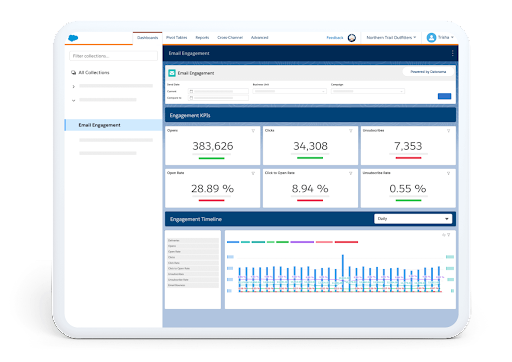Salesforce Marketing Cloud has five releases in 2021. In this recent release, there are many exciting updates.

Enforce Multi-Factor Authentication in Your Tenant
Marketing Cloud admins can enforce multi-factor authentication (MFA) for all users. This setting prevents users in your tenant from skipping the registration process and forces them to register their verification method the next time they log in. This option applies only to Marketing Cloud tenants created before the August 2020 Marketing Cloud release.
You can enable this setting in the Security Settings section of Setup in Marketing Cloud. Salesforce plans to make this feature available to all applicable Marketing Cloud accounts by the end of August. You cannot disable this setting after you enable it. MFA will be mandatory for all Marketing Cloud customers beginning February 1, 2022.
Self-Serve SSL Certificates for Custom Domains
This feature lets you use Marketing Cloud Setup to secure custom domains configured for Sender Authentication Package (SAP) or private domains configured for CloudPages.
- When: This feature is available after August 17, 2021.
- Why: Previously, the Marketing Cloud process for provisioning SSL Certificates took up to 4-6 weeks to secure the domains. Now customers who have delegated control of their domain to Salesforce Marketing Cloud can secure custom domains in less than 10 days.
- How:
- Navigate to Setup, then search for and select Custom Domains.
- Click the action arrow next to a domain, then select Secure this Domain.
Configure Thresholds for Einstein Engagement Scoring Email
Marketing Cloud admins can now customize the upper and lower thresholds for each Engagement Scoring KPI. KPIs include Likelihood to Open, Click, Unsubscribe, and Purchase (Requires Einstein Recommendations). This enhancement gives marketers greater control over how Engagement Scoring categorizes their contacts to better align their business goals with Einstein’s predictions.
- How: You can configure thresholds in the Einstein Engagement Scoring section of the Einstein Setup page, or use the new prompt available in the Einstein Engagement Scoring Email app. Setup includes allowing Einstein’s models to perform an initial run, which takes 48 to 72 hours. After setup, you can configure the thresholds.

Test Your Content Assets
Marketers continually test content to determine what’s working with the audience. But setting up tests and getting results the old way takes time. Einstein Content Testing is designed to make it easy to test content variations. Create a test, add the content you want to test, and then add the Einstein Content Testing content block to an email. Einstein performs the test and shows you the results in real time.
- How: In Einstein Content Selection, from the main menu Einstein tab, click the Content Testing tab. A list of the tests created appears. To see test results, click a test. Click New Test to create a test. Name the test and add the content that you want to test. When the test is ready to go, click Publish. After a test is published you can add it to an email in Content Builder. Drag the new Einstein Content Testing content block into your message.
Get Datorama Reports with Pro Edition
Generate, view, and share a detailed analysis of your email and journey campaign data to optimize performance and increase engagement with your customers. Datorama Reports for Marketing Cloud is now available for Pro edition, in addition to Enterprise and Corporate editions.
- Where: All Corporate, Enterprise, and now Pro edition customers can access Datorama Reports. Contact your account representative.
- Why: Datorama Reports offers these tools:
- Dashboards—Easily analyze your data and make informed, data-driven decisions with prebuilt dashboards that visualize email and journey campaign data up to the business unit level.
- Scheduled reports—Retrieve, view, and share a detailed analysis of your data. Schedule and share reports via Excel, .csv files, and text or through visual formats like PowerPoint, PDF, and PNG.
- Pivot tables—Create custom reports that organize, summarize, and slice your data to explore comparisons, trends, and patterns.
- How: From Analytics Builder, select Datorama Reports.







